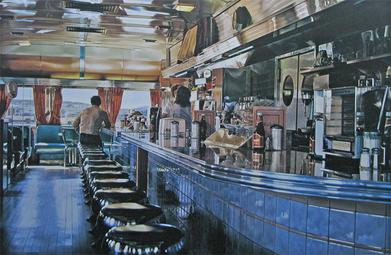part II
TEXTURE:
In the visual arts, texture is the perceived surface quality of a work of art.
It is an element of two-dimensional and three-dimensional designs and
is distinguished by its perceived visual and physical properties. Use of
texture, along with other elements of design, can convey a variety of messages and emotions.
There are mainly two types of textures:
Physical texture:Physical texture, also known as actual texture or tactile texture,
are the actual variations upon a surface. This can include, but is not
limited to, fur, wood grain, sand, smooth surface of canvas or metal,
glass, and leather. It differentiates itself from visual texture by
having a physical quality that can be felt by touch.
TYPES OF PHYSICAL TEXTURES
 |
| We can perceive and feel how the texture of the rock should be, that is rough and soiling |
 |
| we can see and feel the steeely and smooth texture |
 |
| trunk of a tree creates a rough texture |
 |
| This is a texture of crocodile. It's scaly texture creates a rough feel |
Visual texture:Visual texture is the illusion of having physical texture. Every material and every support surface has its own visual texture and needs to be taken into consideration before creating a composition. As such, materials such as canvas and watercolour paper are considerably rougher than, for example, photo-quality computer paper and may not be best suited to creating a flat, smooth texture. Photography, drawings and paintings use visual texture both to portray their own subject matter realistically and with interpretation. Texture in these media is generally created by the repetition of the shape and line.
TYPES OF VISUAL TEXTURES
 |
in this image despite it's smooth physical texture we can see perceive different textures of different objects due to our visual
understanding |
 |
| here we can again feel the wooden contours af the house, liquid texture and also the mushy texture of the garden in this surreal painting. |




















